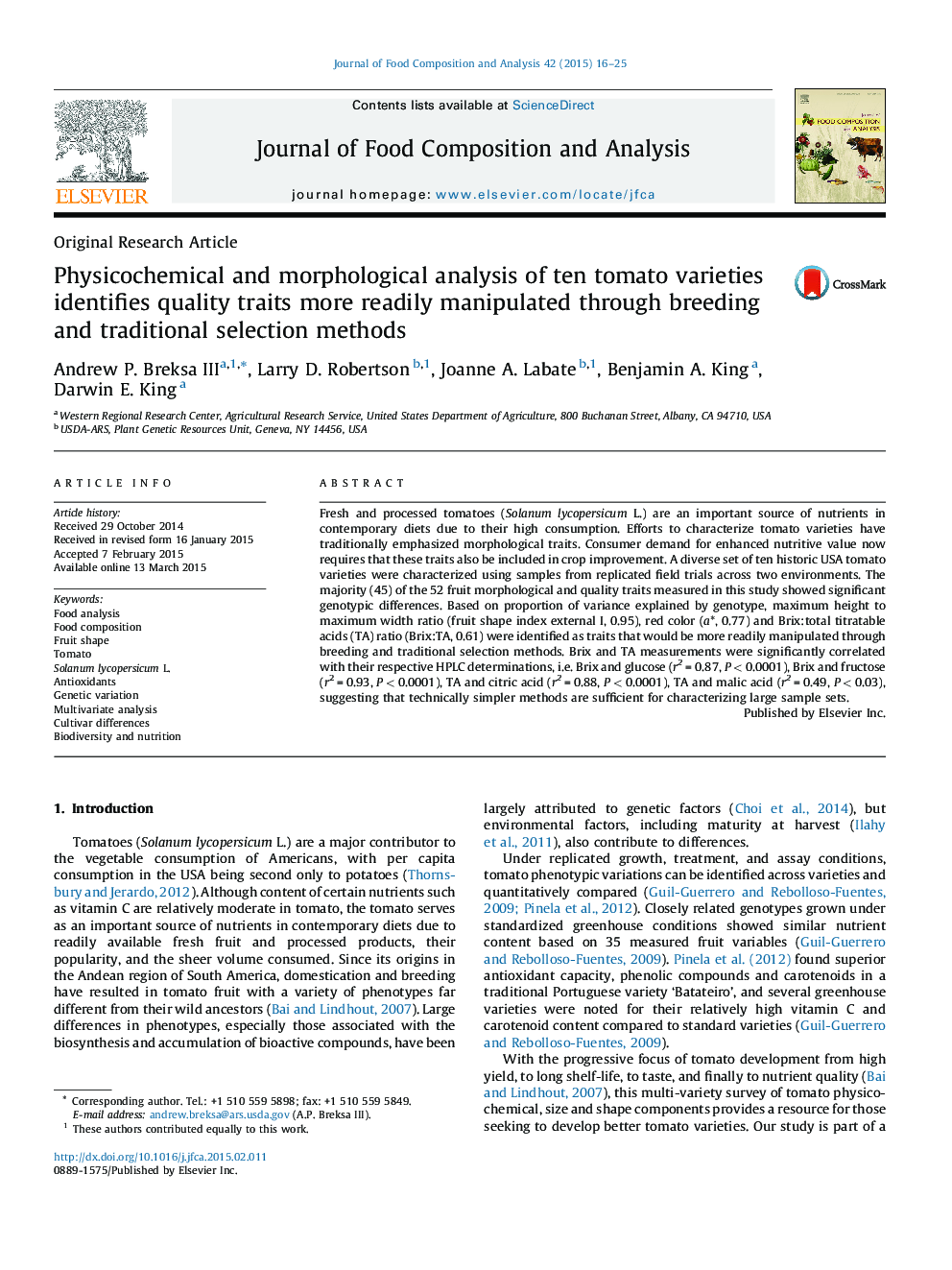| Article ID | Journal | Published Year | Pages | File Type |
|---|---|---|---|---|
| 7620415 | Journal of Food Composition and Analysis | 2015 | 10 Pages |
Abstract
Fresh and processed tomatoes (Solanum lycopersicum L.) are an important source of nutrients in contemporary diets due to their high consumption. Efforts to characterize tomato varieties have traditionally emphasized morphological traits. Consumer demand for enhanced nutritive value now requires that these traits also be included in crop improvement. A diverse set of ten historic USA tomato varieties were characterized using samples from replicated field trials across two environments. The majority (45) of the 52 fruit morphological and quality traits measured in this study showed significant genotypic differences. Based on proportion of variance explained by genotype, maximum height to maximum width ratio (fruit shape index external I, 0.95), red color (a*, 0.77) and Brix:total titratable acids (TA) ratio (Brix:TA, 0.61) were identified as traits that would be more readily manipulated through breeding and traditional selection methods. Brix and TA measurements were significantly correlated with their respective HPLC determinations, i.e. Brix and glucose (r2Â =Â 0.87, PÂ <Â 0.0001), Brix and fructose (r2Â =Â 0.93, PÂ <Â 0.0001), TA and citric acid (r2Â =Â 0.88, PÂ <Â 0.0001), TA and malic acid (r2Â =Â 0.49, PÂ <Â 0.03), suggesting that technically simpler methods are sufficient for characterizing large sample sets.
Keywords
Related Topics
Physical Sciences and Engineering
Chemistry
Analytical Chemistry
Authors
Andrew P. III, Larry D. Robertson, Joanne A. Labate, Benjamin A. King, Darwin E. King,
